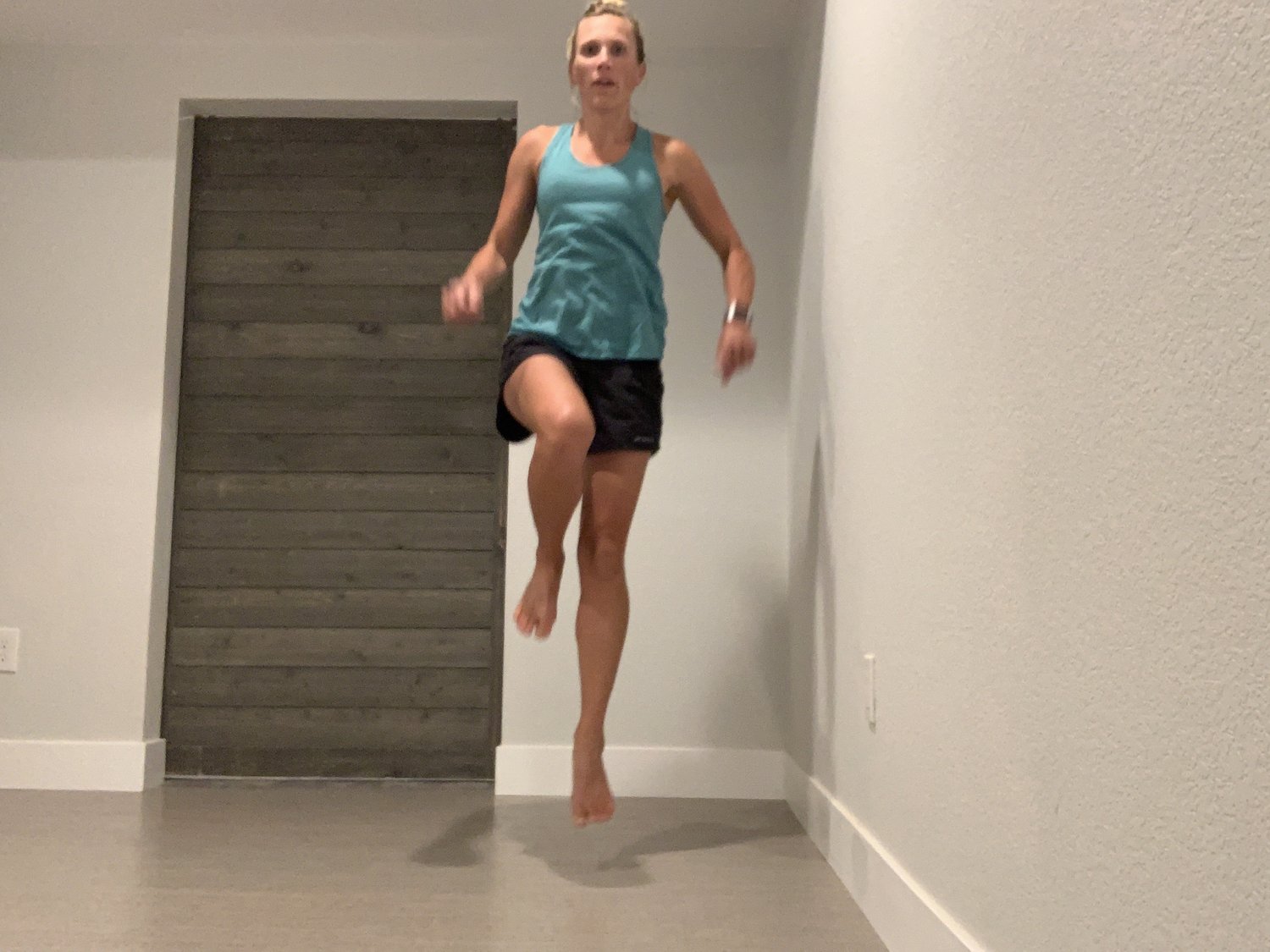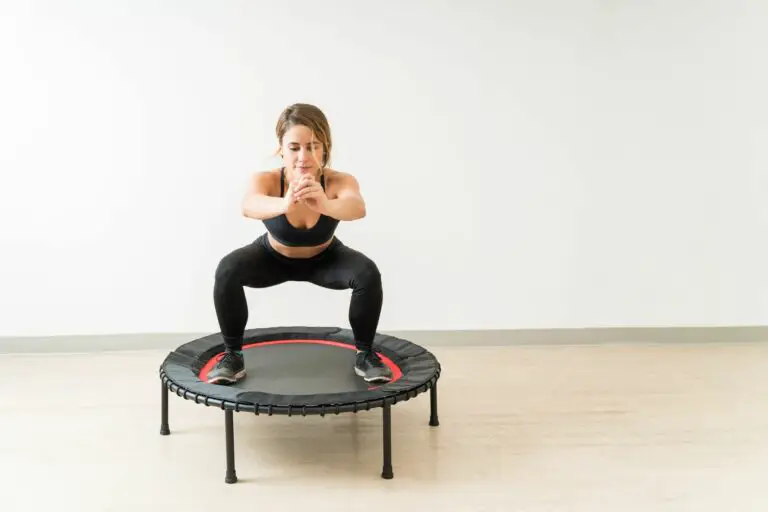A prolapse is a medical condition where an organ or tissue in the body falls down or slips out of place. The most common type of prolapse is uterine prolapse, which occurs when the uterus descends into the vagina. However, prolapses can also occur in other parts of the body, such as the bladder, bowel, or rectum.
While jumping on a trampoline may not be the direct cause of a prolapse, it can certainly contribute to it. When you jump on a trampoline, your body is subject to two times its normal gravity. This puts immense pressure on your organs and tissues, which can lead to a prolapse over time.
If you already have weak pelvic floor muscles or connective tissue, then jumping on a trampoline is even more likely to cause a prolapse. If you’re concerned about developing a prolapse, it’s best to avoid activities like jumping on a trampoline that put unnecessary strain on your body.
A prolapse is a condition where your organs fall down or slip out of place. This can happen in the uterus, rectum, or bladder. A uterine prolapse happens when the uterus slips down into the vaginal canal.
A rectal prolapse happens when the rectum falls down into the anal canal. And a bladder prolapse (cystocele) happens when the bladder bulges into the vaginal canal.
Jumping on a trampoline can cause any of these types of prolapses because of the added pressure and strain that it puts on your pelvic floor muscles and ligaments.
The repeated jolting and jarring can weaken these muscles and ligaments, causing them to give way and allow your organs to slip out of place. If you have any type of prolapse, it’s important to avoid activities like jumping on a trampoline that could make it worse.
bellicon Moves to Strengthen the Pelvic Floor
Negative Side Effects of Rebounding
There are a few potential negative side effects of rebound exercise, though these are typically mild and go away with time. They include:
-Joint pain: This is the most common side effect reported by people who rebound.
It’s thought to be caused by the repetitive impact on the joints, which can lead to inflammation. If you experience joint pain, it’s important to listen to your body and take breaks as needed.
-Muscle soreness: Another common side effect, muscle soreness is usually due to overuse or improper form when rebounding.
Again, it’s important to listen to your body and take breaks if you start feeling too much discomfort.
-Nausea: Some people report feeling nauseous after rebounding, especially if they do it on an empty stomach. This is likely because of the jarring nature of the exercise combined with the lack of food in the stomach.
If you experience nausea, try eating something before rebounding or taking a break if necessary.
Overall, rebound exercise is safe and effective for most people. However, as with any form of exercise, there are some potential risks involved.
If you experience any negative side effects, be sure to listen to your body and stop rebounding if necessary.
Trampoline Incontinence
For many people, trampoline incontinence is a very real and embarrassing problem. This condition is caused by the weakening of the pelvic floor muscles, which can lead to leakage of urine or feces when jumping on a trampoline. There are a number of things that can contribute to this problem, including pregnancy, childbirth, menopause, obesity, and even certain medications.
Fortunately, there are treatments available that can help to strengthen the pelvic floor muscles and reduce or eliminate trampoline incontinence.
If you are suffering from trampoline incontinence, it is important to talk to your doctor about treatment options. One popular option is Kegel exercises, which can help to strengthen the pelvic floor muscles.
Another option is electrical stimulation therapy, which uses electrical impulses to help tone the muscles in the area. In some cases, surgery may be necessary to correct the problem.
No matter what treatment option you choose, it is important to stick with it and be patient.
It may take some time before you see results, but if you are persistent, you will eventually be able to overcome this embarrassing condition.
Trampoline to Strengthen Pelvic Floor
If you’re like most people, you probably think of trampolines as a fun childhood toy. But did you know that bouncing on a trampoline can also be great for your health? That’s right – jumping on a trampoline can actually help to strengthen your pelvic floor muscles!
The pelvic floor is a group of muscles located at the bottom of the pelvis. These muscles support the bladder and bowel, and help to control urination and defecation. Weakness in the pelvic floor muscles can lead to incontinence, prolapse, and other problems.
So how does bouncing on a trampoline help to strengthen the pelvic floor? Well, when you land on the trampoline, all of your body weight is suddenly transferred downward into your legs and feet. This puts pressure on the pelvic floor muscles, causing them to contract.
Over time, this repeated contraction will lead to stronger muscles.
In addition to strengthening the pelvic floor, bouncing on a trampoline can also improve balance and coordination, burn calories, and reduce stress levels. So if you’re looking for a fun way to get fit and stay healthy, consider adding some time on the trampoline to your workout routine!
Jumping on Trampoline Postpartum
There are many benefits to trampoline exercise postpartum. It can help improve your mood, increase energy levels, and promote healing. Additionally, trampoline exercise can help you lose weight postpartum and get your body back into shape.
If you’re looking for a fun way to get moving again after having a baby, trampoline jumping is a great option. Not only is it Exercise has been shown to be beneficial for postpartum women, but it’s also a great way to bond with your baby. You can even bring your baby along on the trampoline with you!
Here are some tips for getting started with trampoline jumping postpartum:
• Check with your doctor first to make sure it’s safe for you to start exercising again after having a baby. Once you get the green light, start slowly and gradually increase the intensity as you feel comfortable.
• If possible, find a friend or family member who can watch your baby while you jump on the trampoline. This will allow you to focus on your workout and not worry about entertaining or caring for your little one at the same time.
How to Strengthen Pelvic Floor
Your pelvic floor is a group of muscles and tissues that support your bladder, uterus, and rectum. These muscles work together to control your urinary and anal sphincters. When these muscles are strong, they can help prevent incontinence, prolapse, and sexual dysfunction.
There are many ways to strengthen your pelvic floor muscles.
Kegel exercises are one of the most popular methods. To do a Kegel exercise, squeeze your pelvic floor muscles as if you were trying to stop urinating or passing gas.
Hold the contraction for three to five seconds, then relax for five seconds. Repeat this 10 times per session, three times per day.
Other exercises that can help strengthen your pelvic floor include Pilates, yoga, and Tai Chi.
These exercises improve muscle strength and flexibility while also promoting relaxation. If you have any pain in your pelvis or lower back, talk to your doctor before starting any new exercise program.
Why Trampolines are Bad
Most people believe that trampolines are a great source of entertainment and exercise. However, there are many dangers associated with trampolines that people are often unaware of. Here are four reasons why trampolines are bad:
1. Trampolines can lead to serious injuries. Every year, hundreds of people are injured while using trampolines. The most common injuries include broken bones, concussions, and spinal cord injuries.
In some cases, these injuries can be life-threatening.
2. Trampolines can damage your property. If you live in a house with a yard, chances are you’ve seen a trampoline that has been abandoned by its owner after it blew away in the wind or got too damaged to use anymore.
Not only do they take up space in your yard, but they can also damage your fence or other property if they blow into it.
3. Trampolines can be dangerous for small children. Small children can easily fall off of trampolines and suffer serious injuries as a result.
If you have small children, it’s best to avoid having a trampoline on your property altogether.
Dangers of Mini Trampoline
Most people associate trampolines with fun and games. However, mini trampolines can pose a serious danger to users, especially children. A study published in the journal Pediatrics found that there were nearly 100,000 emergency room visits due to mini trampoline injuries between 2007 and 2009.
The most common injuries were fractures (20%), bruises and contusions (17%), and strains and sprains (11%). Head injuries made up 7% of all ER visits, and neck and back injuries accounted for 5%.
There are several factors that contribute to the increased risk of injury on mini trampolines.
First, they are often used by multiple people at once, which can lead to collisions. Second, their small size makes them less stable than full-sized trampolines, meaning users are more likely to fall off. Finally, manymini trampolines do not have safety nets or padding around the edge, which can exacerbate the severity of an injury if a user falls off.
If you or your child is using a mini trampoline, it’s important to take precautions to reduce the risk of injury. Make sure there is only one person on the trampoline at a time, and supervise children closely when they are using it. Additionally, make sure the area around thetrampoline is clear of any obstacles that could cause someone to trip and fall while getting on or off the device.
Finally, don’t allow anyone to use the mini trampoline without proper safety gear such as glovesand knee pads.

Credit: www.mendcolorado.com
Does Trampolining Damage Pelvic Floor?
Trampolining is a great way to get some exercise, have some fun and even relieve stress. However, there is some concern that trampolining may damage the pelvic floor. Let’s take a look at this issue in more detail.
The pelvic floor is a group of muscles and tissues that support the bladder and other organs in the pelvis. These muscles can be weakened by pregnancy, childbirth and menopause. This can lead to incontinence and other problems.
There is also some evidence that high-impact activities like running or jogging can weaken the pelvic floor muscles.
So, does trampolining damage the pelvic floor? There is no definitive answer, but there is some concern that it could contribute to weakening of these important muscles.
If you are concerned about this, you may want to avoid trampolining or take breaks often while you are bouncing on the trampoline. You should also consult with your doctor if you have any concerns about whether trampolining is safe for you given your health history.
Can Jumping Cause Prolapse?
There is no definitive answer to this question as there are many variables at play. However, it is generally agreed upon by medical professionals that jumping can put unnecessary strain on the pelvic floor muscles and connective tissues, which could lead to prolapse. Additionally, if you already have a weakened pelvic floor, jumping may exacerbate the condition and cause further prolapse.
Therefore, it is generally advised that women with prolapse avoid high-impact activities like jumping.
Can You Jump on Trampoline With Prolapse?
A prolapse is when one of your organs falls from its normal position in your body. It can happen to any organ, but it most commonly affects the uterus (womb), bowel or bladder. If you have a prolapse, you might feel a lump or bulge in your vagina, or notice that your underwear is wet or stained.
You might also feel like you need to wee more often than usual.
Most prolapses are not painful, but they can be uncomfortable and cause problems with sex and going to the toilet. Prolapses are very common after childbirth and as women get older.
They can also happen if you strain a lot when going to the toilet (constipation), are overweight, smoke cigarettes or have been through menopause.
You can help prevent prolapse by doing pelvic floor exercises every day and avoiding straining when you go to the toilet. If you already have a prolapse, there are things that can help make it better such as wearing a supportive device called a pessary inside your vagina or doing surgery.
You should avoid jumping on trampolines if you have a prolapse because this could make it worse.
Does Jumping on a Trampoline Help Your Pelvic Floor?
There are many benefits to jumping on a trampoline, including improved cardiovascular health and increased lymphatic circulation. Additionally, jumping on a trampoline can help strengthen your pelvic floor muscles.
Your pelvic floor is a group of muscles that support your bladder and bowel.
These muscles can weaken over time due to pregnancy, childbirth, menopause, or other factors. This can lead to incontinence or prolapse (when organs drop down into the vagina).
Jumping on a trampoline helps to tone and strengthen your pelvic floor muscles.
This can help improve bladder control and reduce the risk of prolapse. If you have any concerns about your pelvic floor health, talk to your doctor before starting any new exercise program.
Conclusion
A prolapse is when your pelvic organs fall out of place. The most common type of prolapse happens when the uterus falls into the vagina. Jumping on a trampoline can cause prolapse because of the added pressure on your pelvic floor.
When you jump, your pelvic floor muscles have to work harder to keep everything in place. If they are already weak from pregnancy or childbirth, they may not be able to hold everything in and a prolapse can occur. If you have any symptoms of prolapse, such as a bulge in your vagina or pain during sex, you should see a doctor.





